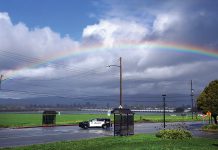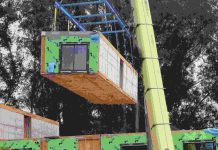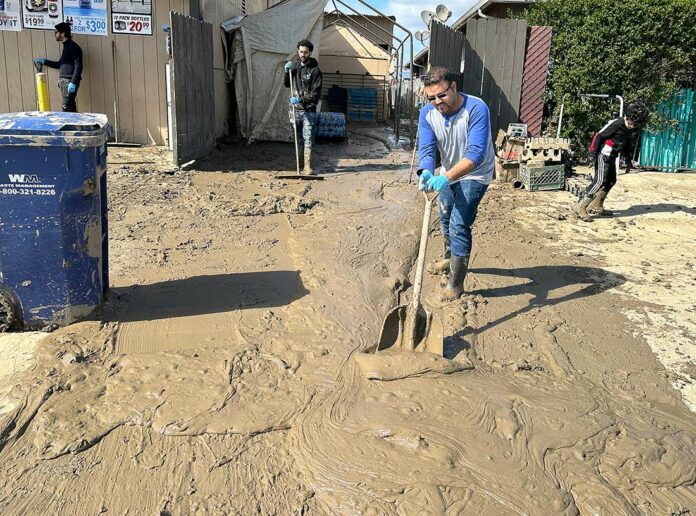
PAJARO—On Thursday, Beatriz Lopez returned to the small apartment she shares with 10 family members on Associated Lane in the flood-ravaged town of Pajaro, 12 days after Monterey County officials imposed evacuation orders for more than 1,000 residents.
Lopez, 20, was among hundreds of people who returned to comb through the remains of their homes, many of them scraping away layers of thick, slippery mud from floors and driveways in hopes of salvaging something of their pre-flood lives.
For Lopez, that amounted to very little.
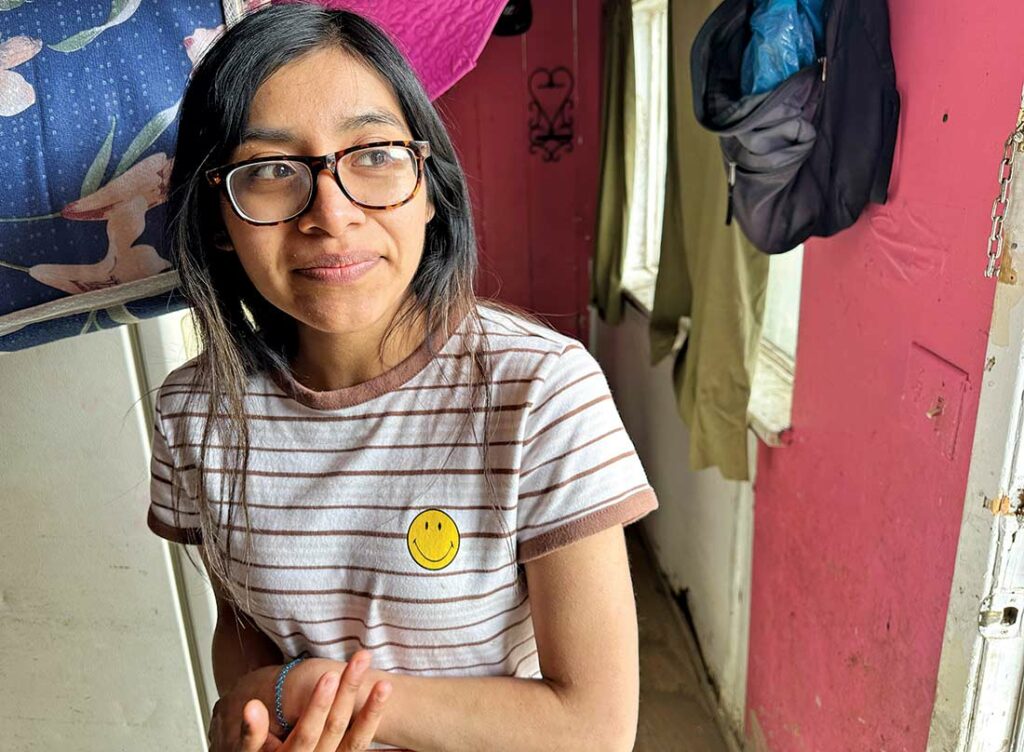
“Everything is destroyed,” she says. “Everything. I don’t think we’re going to live here anymore.”
Lopez is now living in the temporary shelter at the Santa Cruz County Fairgrounds, a lifestyle she has not yet gotten used to.
“I can’t sleep well,” she says.
County officials placed portable toilets throughout Pajaro in anticipation of residents’ return, along with several more in the parking lot of Pajaro Middle School, which also holds shower trailers, laundry washing stations and a food tent. Another such “hub” is set up at Pajaro Park.
Lifelong Pajaro resident Jerry Castro, who bought his home from his parents after growing up there—and raised his own family—says his place was “bone dry.”
The same was not true for a small outbuilding to the rear of his house, which Lopez calls his “man cave.”
Inside, a neon Corona beer sign illuminates several posters and license plates that festoon the walls, along with several tools sitting atop tables. But the floor is caked in at least an inch of mud, along with a sodden pile of possessions that are likely beyond help.
Lopez was planning on returning Friday to clean the space, after local officials brought dumpsters to the affected neighborhoods.
Water woes
Residents’ return was to be a brief one—just enough to assess damages and begin cleaning. There is still no water service, so County officials are not allowing anyone to occupy their homes.
Pajaro Sunny Mesa Community Services District General Manager Don Rosa says that the flood destroyed the electrical system that powered the pumps.
That repair was completed Wednesday, he says, but the organization is waiting for a ruptured sewer pipe running under Highway 1 to be repaired before water can begin flowing. That could happen by late Friday, Rosa says.
But even when it does, he says the water will be considered non-potable.
“We have to presume it was contaminated because it was in a flood zone,” Rosa says.
After that, Rosa estimates it will take from seven to 14 days for the water to be considered safe.
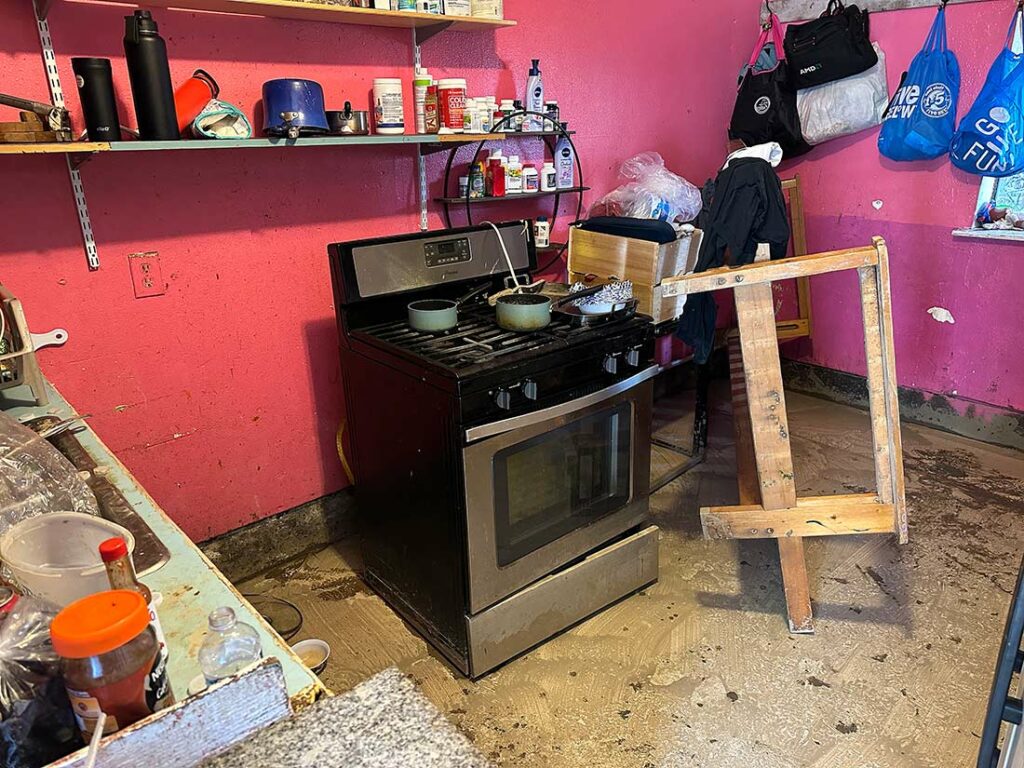
Teams from state and local agencies were assessing homes and apartment buildings throughout the day, affixing yellow tags onto many of them indicating that, while residents could enter, they are not yet safe for occupancy. Others received red tags, meaning the structure is unsafe to enter and possibly beyond repair.
Cal Fire Captain Curtis Rhodes said crews have inspected more than 880 homes in Pajaro. He said they focused on whether homes still had water and sewer hookups and how they were functioning.
“Right now, it looks like our crews will continue working this situation through mid-April,” he said. “That work is being done both on the ground and through our drone service.”
Monterey County Supervisor Luis Alejo, who was in Pajaro helping residents, said the damage is so severe—and the mud so thick in places—that the meager tools being provided are not enough.
“I’ve seen parents in tears opening their doors and seeing the damage caused by the mud and water,” he said. “There is a tremendous sense of loss.”
Federal aid uncertain
The assessments by local officials, the California Office of Emergency Services and the governor’s office are part of local efforts to meet the damage threshold necessary for federal officials to declare a disaster, thus freeing up FEMA assistance.
Once that is done, Gov. Gavin Newsom will make a formal request to President Joe Biden, and then the Congress will send a letter urging the president to grant California’s disaster declaration request.
The estimated damage in Santa Cruz County meets the necessary federal threshold, according to Dave Reid, who oversees the Office of Response, Recovery & Resilience.
But it was not clear Thursday whether Monterey County’s damages will qualify for FEMA assistance.
Alejo estimates that the threshold in Monterey County is between 1,000 and 2,000 damaged homes, with floodwaters reaching 18 inches.
Alejo says he invited Biden to tour the area after the levee broke on March 11. He has also been keeping pressure on the Governor’s office.
“Residents need help immediately,” Alejo says. “They are asking why FEMA isn’t here yet. It should already be on the ground.”
If FEMA aid does not come through, it will fall to state and local officials.
Monterey County Supervisor Glenn Church says he has been in contact with CAL OES, and that a federal disaster declaration—and the assistance that comes with it—is imminent.
“It will be coming,” he says. “There is enough damage.”


